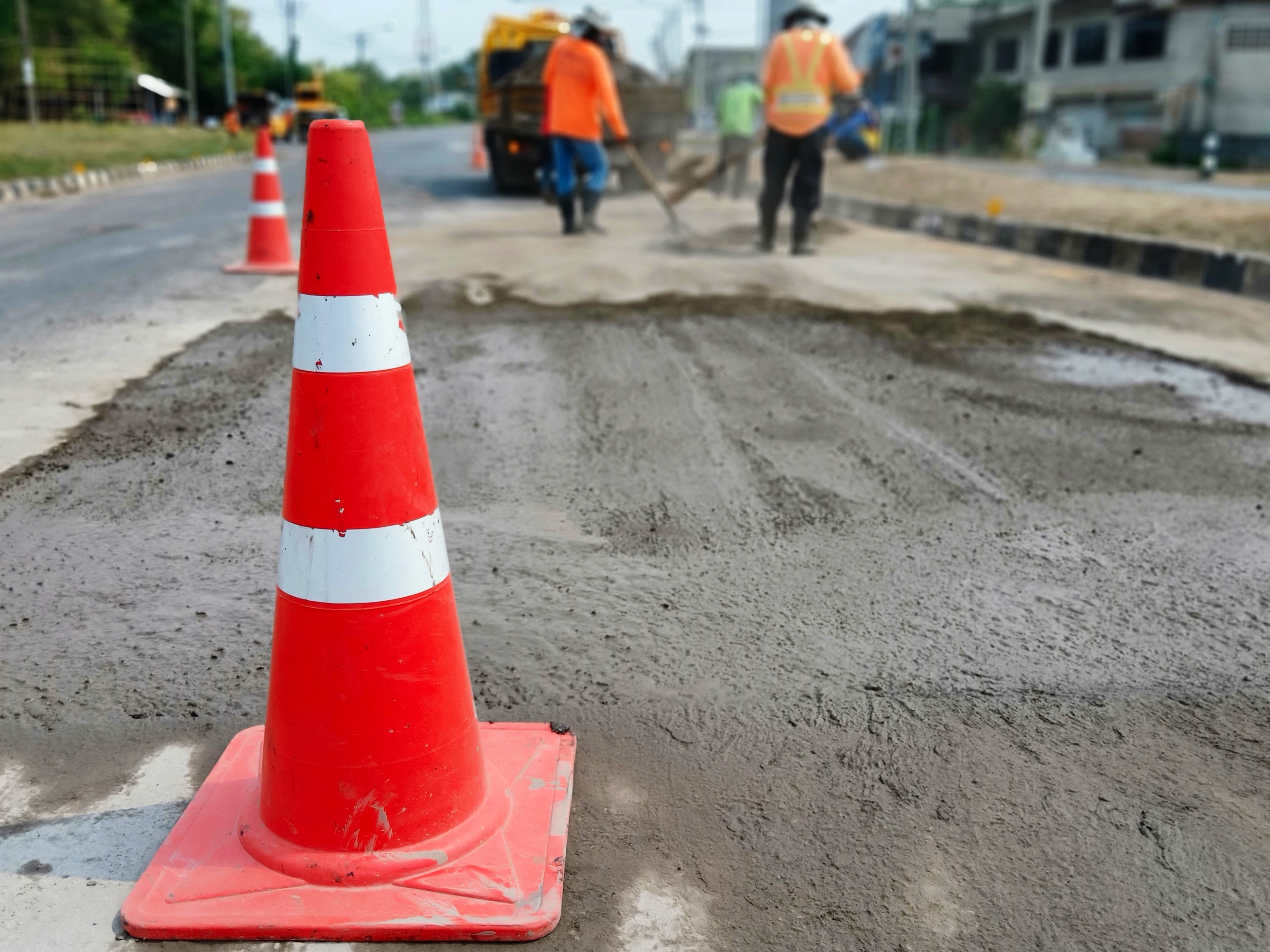"Safety doesn't happen by accident." - Author Unknown
Table of Contents
- Introduction
- Importance of Traffic Cones
- Choosing the Right Traffic Cones
- Placement Guidelines
- Cone Spacing
- Visibility and Reflectivity
- Effective Communication
- Weather Considerations
- Maintenance of Traffic Cones
- Training for Workers
- FAQs
- Conclusion
Ensuring safety in road construction and maintenance is paramount. High-visibility traffic cones are essential for directing vehicles and protecting workers. This blog post will guide you through best practices for deploying traffic cones and ensuring safety and efficiency on the highway or any road work site.

Importance of Traffic Cones
Traffic cones are crucial for managing road traffic and ensuring safety. They provide a clear, visible signal to motorists, warning them of roadworks ahead. These cones help prevent accidents by guiding traffic away from hazardous areas.
-
Accident Prevention: Proper cone deployment minimises the risk of accidents.
-
Work Zone Safety: Cones protect both workers and drivers.
-
Traffic Flow: Traffic cones help maintain an orderly flow of vehicles.
Choosing the Right Traffic Cones
Selecting appropriate traffic cones is vital. Different construction scenarios require various types of cones. There are a range of traffic cones available with various features like being compact or the colour of the cone.
-
Height: Taller cones (28 inches or more) are more visible and suitable for highways.
-
Material: Durable materials like PVC or rubber withstand harsh conditions.
-
Base: Wide bases provide stability, preventing cones from toppling over.
Placement Guidelines
Correct placement of traffic cones is essential for effectiveness.
-
Advance Warning: Place cones well ahead of the work zone to give drivers ample warning.
-
Tapering: Create a gradual transition from the normal traffic flow to the work zone.
-
Buffer Zone: Establish a buffer area between the cones and the work zone for added safety.
Cone Spacing
Proper spacing between traffic cones ensures they are effective.
-
Distance: Place cones at intervals of about 6-12 feet on urban roads and 20-40 feet on highways.
-
Visibility: Ensure cones are visible from a distance to give drivers time to react.
-
Lane Closures: Use tighter spacing for lane closures to clearly define the work area.
Visibility and Reflectivity
Making traffic cones highly visible is crucial, especially in low-light conditions.
-
Reflective Strips: Ensure cones have reflective bands to enhance visibility at night.
-
Bright Colours: Use bright orange or lime green cones for maximum visibility.
-
Illumination: Consider adding lights or beacons to cones for nighttime work.
Effective Communication
Clear communication is key to managing traffic around construction zones.
-
Signage: Use clear, legible signs to supplement traffic cones.
-
Flaggers: Employ trained flaggers to direct traffic and communicate with drivers.
-
Public Alerts: Inform the public about roadworks through local media and social channels.
Weather Considerations
Adverse weather can affect the visibility and stability of traffic cones.
-
Wind: Use weighted bases to prevent cones from blowing over.
-
Rain and Fog: Ensure reflective strips are clean and visible in wet conditions.
-
Snow: Use taller cones to remain visible above snow accumulation.
Maintenance of Traffic Cones
Regular maintenance of traffic cones is essential to ensure they remain effective.
-
Inspection: Regularly check cones for damage or wear.
-
Cleaning: Keep cones clean to maintain visibility.
-
Replacement: Replace damaged or faded cones promptly.
Training for Workers
Proper training for road construction and maintenance crews ensures the effective use of traffic cones.
-
Safety Training: Educate workers on the importance of proper cone deployment.
-
Practical Sessions: Conduct hands-on training to practice placement and spacing.
-
Ongoing Education: Keep workers updated on any changes in safety regulations.
FAQs
What is the ideal height for traffic cones in road construction?
For highways, taller cones (28 inches or more) are recommended for better visibility.
How often should traffic cones be inspected?
Traffic cones should be inspected regularly, ideally before each use, to ensure they are in good condition.
Can traffic cones or road cones be used in all weather conditions?
Yes, but additional measures such as weighted bases and reflective strips may be needed for stability and visibility in adverse weather.
Deploying traffic cones effectively in road construction and maintenance is crucial for ensuring safety and managing traffic flow. By following these best practices, you can significantly reduce the risk of accidents and create a safer environment for both workers and motorists. For more detailed guidance, consider consulting with safety officers or attending specialised training sessions. Stay safe and keep your work zones secure!
